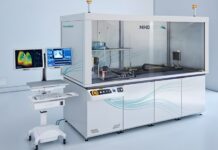
Quantum computing is poised to revolutionise technology, but building one remains a complex challenge, according to Andrea Morello, Scientia Professor of Quantum Engineering at the University of New South Wales (UNSW).
As a 2024 Australian Research Council (ARC) Laureate Fellow and Program Manager at the ARC Centre of Excellence for Quantum Computation and Communication Technology, Morello believes quantum computing is at a critical juncture.
“To build a quantum computer, you still need to encode information in a binary form – a zero and a one – just like in a classical computer,” said Morello, describing how modern quantum computing fundamentally mirrors its classical counterpart.
He explained, “For a quantum computer, you need to first decide what physical object you code with the zeros and ones – but in this case, you want them to be quantum systems, where the zero and one are represented by the quantum states of the object. The most natural places to find such quantum states is in the realm of atoms, at the scale of nanometres.”
Morello, an expert in quantum spin physics, explained that while classical computers rely on transistors to switch between binary states, quantum computers use quantum bits, or qubits.
These qubits can exist in multiple states simultaneously – a feature known as superposition – allowing quantum computers to process vastly more information than classical systems.
“Quantum bits are not confined to being zero or one; they can be both at the same time,” Morello noted.
“If I take two quantum bits, I can put them in a state where they are neither zero nor one, but they are the opposite of each other. This is called an entangled state.”
Morello’s team, in collaboration with Australian researchers, achieved a significant breakthrough in 2010 when they demonstrated quantum computing technology on silicon for the first time.
By implanting a phosphorus atom into a silicon chip, they successfully encoded quantum information using the spin of electrons bound to the atom.
Despite this progress, Morello acknowledged that building a functional quantum computer capable of solving practical problems will require substantial resources.
“It will cost billions of dollars to develop,” he said, emphasising that the transition from academic research to industrial application is the next step in quantum computing’s evolution.
Morello also stressed the importance of using silicon-based quantum systems, a strategy that leverages decades of semiconductor development.



















